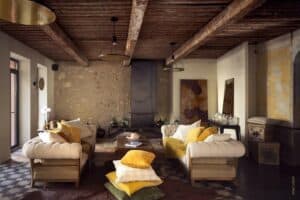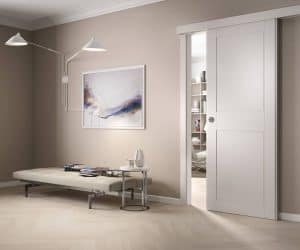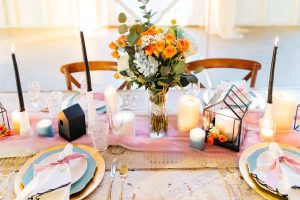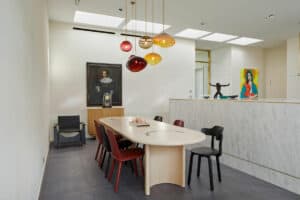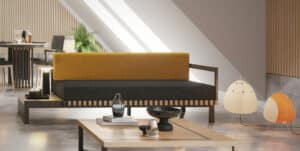In this post we will address the subject of beam ceiling lighting.
If once a ceiling with exposed beams could only be found in rustic settings, today they have become a must for every context, even modern ones.
In fact, when not present structurally, glulam or solid wood beams are such a trendy decorative element that they are often applied posthumously. In fact, it is not uncommon to resort to faux wood beams (sometimes made of materials other than wood, such as polyurethane) in order to give that extra decorative or contrasting touch to a contemporary or modern environment.
In any case, each element must participate in the harmony of the environment in which it is placed, which is why it should also be enhanced with an appropriate lighting system.
In the following we will look at how to set up lighting for a wooden ceiling with white or natural exposed beams.
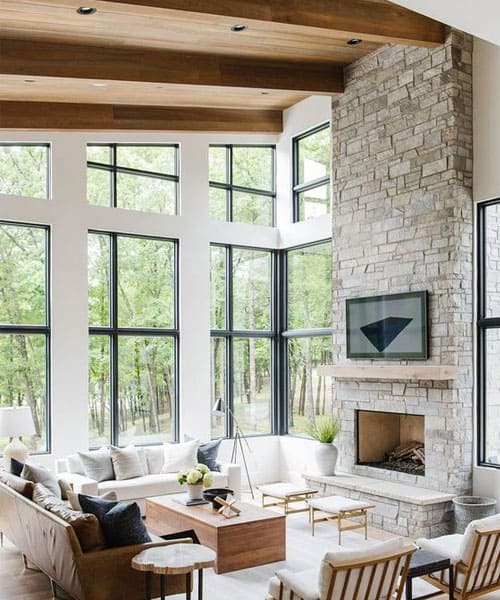
Assess the characteristics of the venue
As it is easy to guess, each environment has its own peculiarities, so there are no rules that can be valid in every context. At the design stage, we need to evaluate well some characteristics of the room we are going to light.
THE DESTINATION OF THE ROOM
In what way will the room be used? Will it have a domestic fruition? A kitchen, living room, bedroom, etc.
Will it be a commercial space? A restaurant, store, office, etc.
Depending on the individual destination, we need to think of a solution that is best so that we do not then have to supplement the lighting of a space with movable lamps (except as a decorative matter).
Remember that the lighting of a room must be sufficient, but at the same time not annoy the eyes of those staying there.
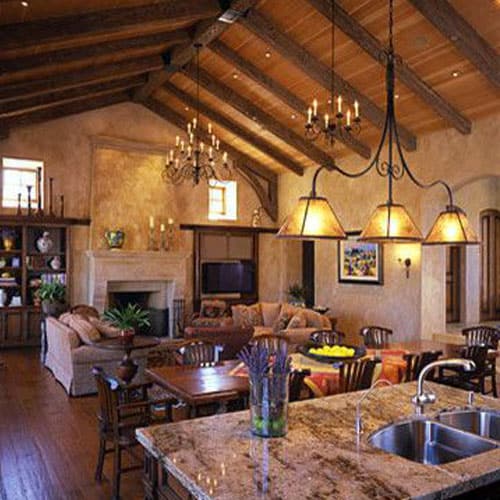
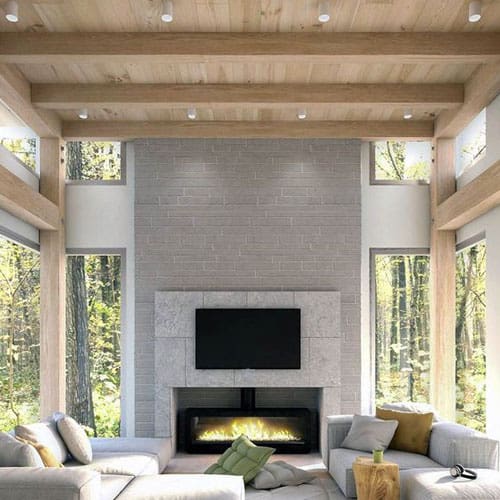
WOODEN CEILING HEIGHT
The height of the wooden ceilings to be lit should also be taken into account, as they can be a cause of light scattering.
It often happens, in fact, that rooms with exposed beams have sloping pitches with considerable heights in the middle or on one side.
In the case of lighting for wooden attics, however, the available height will probably not be much.
Therefore, the choice of lighting fixtures should take this important feature into account, and aim for elements that can illuminate the area at human height. This does not mean that the upper part will remain dark, but that the “lived-in” environment should be brighter.
Alternatives include hanging lamps, spotlights or floor lamps.
Floor lamps are very useful for lighting certain areas, such as the sofa reading area. However, they can also transmit a moderate amount of light toward the ceiling, giving the beams (especially if they are valuable) a certain importance in the overall ambience.


ROOM SIZE
Another factor influencing the choice and arrangement of lighting points in a room, with a wooden ceiling and exposed beams, is the size of the room.
In this case, the number of light fixtures to be included, as well as their distribution, should be carefully considered, keeping in mind how the spaces will be used: seating area (sofa, armchair, coffee table), bed area (bedside table, closet), cooking area, mirror area, etc.
THE COLOURS
When we go to plan the placement and choice of lighting elements, we must also keep in mind the colors: both of the walls, but especially of the ceiling of the room to be lit.
For example, in a room with a white wooden ceiling, we will need to assess the impact that light fixtures can have on the overall ensemble so that they do not overpower the context. So we’ll opt for elements with understated lines, perhaps matching or recessed spotlights.
Wood beam ceiling lighting
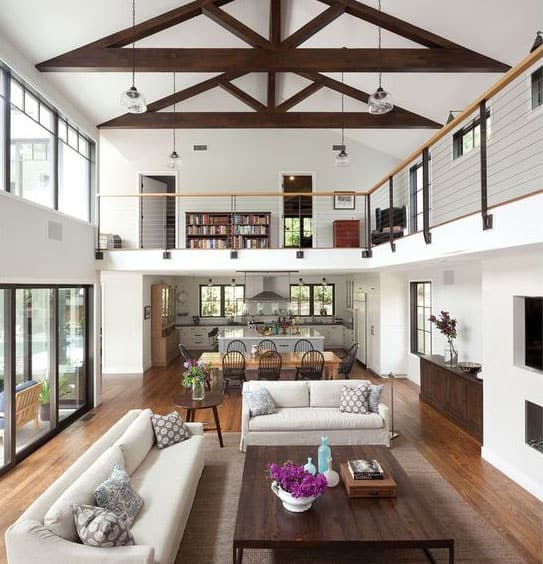
We have seen some characteristics of rooms, from which we cannot disregard in order to obtain a room that is sufficiently bright and pleasant (not annoying) for our eyes.
However, every single element in a room can be exploited for other functions besides the main one. In this case we can integrate light fixtures to embellish, decorate or make a room more functional.
For example, if we have particularly valuable exposed wooden beams, as in a historic home, we might enhance them by trying to draw the visitor’s attention to them. An ideal solution would be to place lighting points so as to illuminate the room from the bottom. But be careful their placement will have to be carefully designed so as to illuminate the ceiling and surroundings without dazzling people.
Or, placing LED light bodies in the grooves of the beam architecture.
In addition, based on the arrangement of the light bodies we can obtain spaces, virtually separate from each other, but within the same room. For example, in a kitchen we might focus the lighting on the table or kitchenette, in the living room we might create the reading corner on the sofa, etc..
Let’s look below at some solutions, broken down by luminaires, that can embellish a wooden roof and the entire surrounding environment withlight.
Wood ceiling lighting with spotlights
Under-beam spotlights are a perfect and efficient solution for lighting a wooden attic.
The current market offers a variety of spotlight solutions.
Choosing to light a room with spotlights can have several advantages. Let’s see them.
- They are easily integrated into any context.
- If a space is small, a series of spotlights can give the idea of a larger room than hanging light fixtures.
- They can be built-in or exposed.
- Different effects can be created depending on the result we want to achieve: for a broad and direct light we will opt to direct the spotlights toward the floor, an ideal solution for stores and workplaces; while for a more subdued lighting we will simply point them toward a wall, an ideal solution for the living room at home or a restaurant.

Wood ceiling lighting with pendant lamps
Chandeliers, always elegant and majestic, are ideal in rooms where the ceiling is high and the room to be lit is large.
The style and structure of pendant lamps can vary according to the taste and personality of the surrounding decor.
We can choose a classic or modern form. Or, opt for pendant lighting profiles that can minimally affect the visual impact, but are capable of highlighting the wooden beams.
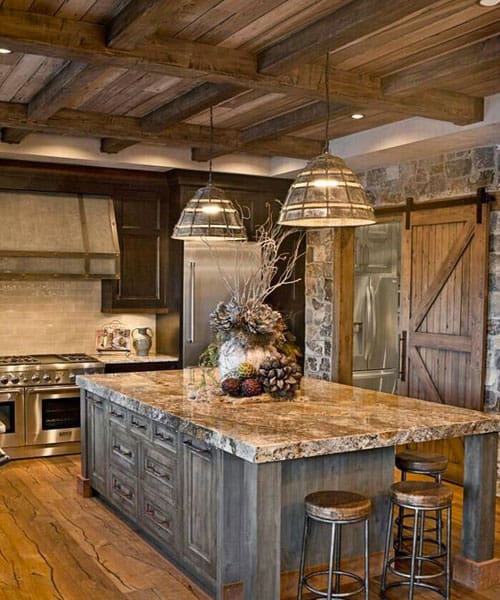
Conclusions
We have seen some basic guidelines and some tips on how to light a room with a wooden ceiling and exposed beams.
When we go to design the lighting of a space, we must remember that a light fixture not only has the task of making a room usable at all hours of the day, but is also a decorative element useful for embellishing and enhancing a room.
Therefore, do not underestimate all the opportunities and benefits that good light spot planning can give you.



